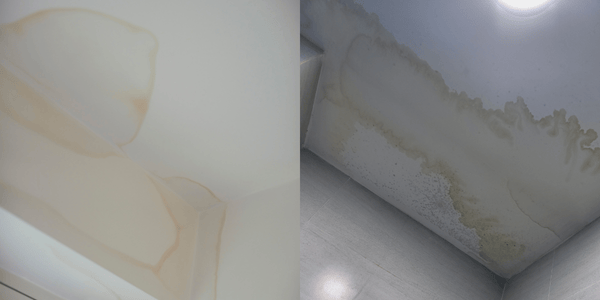
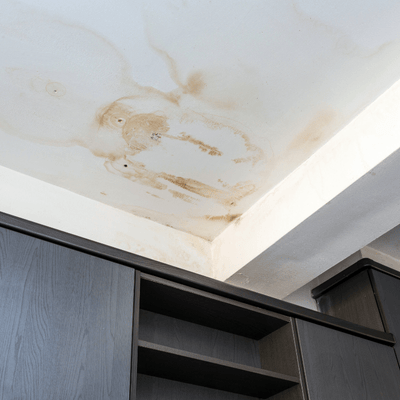
The Unsightly Problem That’s Hard to Ignore
Have you ever walked into a room and noticed those annoying, unsightly water stains seemingly coming out of nowhere? They can instantly dampen the look of your space and, worse, leave you feeling uneasy about what might be lurking behind them.
We get it—water stains are more than just an aesthetic issue, but you don’t have to face them alone. Stay with us, and by the end of this post, you’ll be practically a water-stains expert, ready to tackle the problem head-on. Let’s dive in!
What Are Water Stains, and Are They a Big Deal?
Water stains are discolored patches that appear on walls, ceilings, tiles, or other surfaces when moisture seeps through. They’re often caused by leaks, condensation, or excessive humidity. While they might start as minor blemishes, they usually signal a deeper issue you shouldn’t ignore.
Beyond aesthetics, water stains can be silent warnings of plumbing failures, poor ventilation, or even structural problems. Ignoring them might lead to expensive repairs, mold growth, or further damage down the road. So, yes—while they may seem small, water stains are a big deal.
The Many Faces of Water Stains (and What They’re Telling You)
Rusty Brown Marks
These stains often come from old or leaking pipes, roof issues, or previous water damage. If you spot this, it’s likely a sign of corroded plumbing or a leak that needs immediate investigation.
White Chalky Residue
If you notice a white or powdery film, you’re dealing with hard water stains. These usually appear on glass, tiles, or other smooth surfaces and are caused by mineral deposits building up over time.
Black or Greenish Spots
If you see these, it’s time to sit up and take notice. Black or green spots could indicate mold growth due to persistent moisture. Mold is not only damaging to your home but also your health.
Each type of stain has a story to tell. Identifying what you’re dealing with is the first step to solving the problem.
The Hidden Villains Behind Those Stains
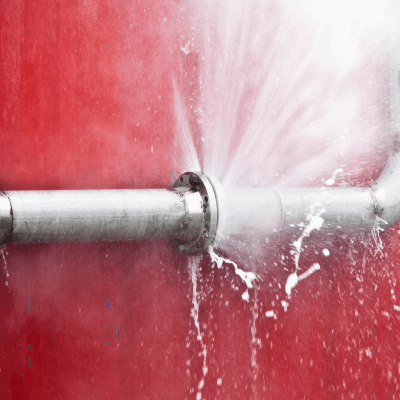
What’s causing those pesky water stains? The culprits can vary, but here are some of the most common reasons:
- Plumbing leaks or burst pipes: Leaks behind walls or ceilings can quickly lead to water stains and bigger issues.
- Roof damage: Storms, wear and tear, or clogged gutters can let water seep through your roof.
- Poor ventilation: Bathrooms and kitchens are notorious for condensation buildup due to lack of airflow.
- Gutter problems: When gutters are clogged or damaged, rainwater can overflow and leak into your home.
Finding and fixing the source of the problem is crucial before you address the stain itself. A simple patch over the spot just won’t cut it!
The Smart Solutions: Say Goodbye to Water Stains for Good
Ready to tackle water stains head-on? Follow these steps for effective removal and prevention:
Step 1: Investigate and Fix the Root Cause
Before grabbing a sponge or paintbrush, identify and repair the source of the moisture. This could mean fixing a leak, cleaning out gutters, or installing better ventilation.
Step 2: Clean the Affected Area
For walls or ceilings, use a mixture of water and mild detergent to gently clean the stain. For hard water stains, a vinegar solution works wonders on tiles and glass surfaces. Always wear gloves and ensure proper ventilation!
Step 3: Prime and Repair
Once the area’s clean and dry, apply a stain-blocking primer to prevent future bleed-through. Then repaint or reseal the surface for a fresh, polished look.
Pro Tip: If the damage is extensive, or you suspect mold, it’s best to call in the professionals for safe and thorough restoration.
Prevention Is the Best Cure: Keeping Water Stains at Bay
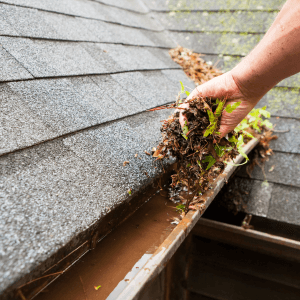
Don’t let water stains make a comeback! Here are simple tips to keep your home stain-free:
- Check your plumbing regularly for hidden leaks.
- Inspect your roof after storms for damage or missing shingles.
- Install a dehumidifier to combat excess moisture in the air.
- Unclog and maintain gutters to prevent water overflow.
- Seal tiles, glass, and other surfaces to resist hard water stains.
A little preventive care goes a long way in protecting your home and saving money in the long run.
Myths About Water Stains You Should Stop Believing
Don’t fall for these common misconceptions:
- “Water stains will disappear on their own.” Nope, they’ll only get worse.
- “Painting over it solves the problem.” Not if you haven’t addressed the underlying cause first.
- “Small stains aren’t a big deal.” Even small stains can indicate larger, hidden problems.
When to Call in the Experts: Knowing Your Limits
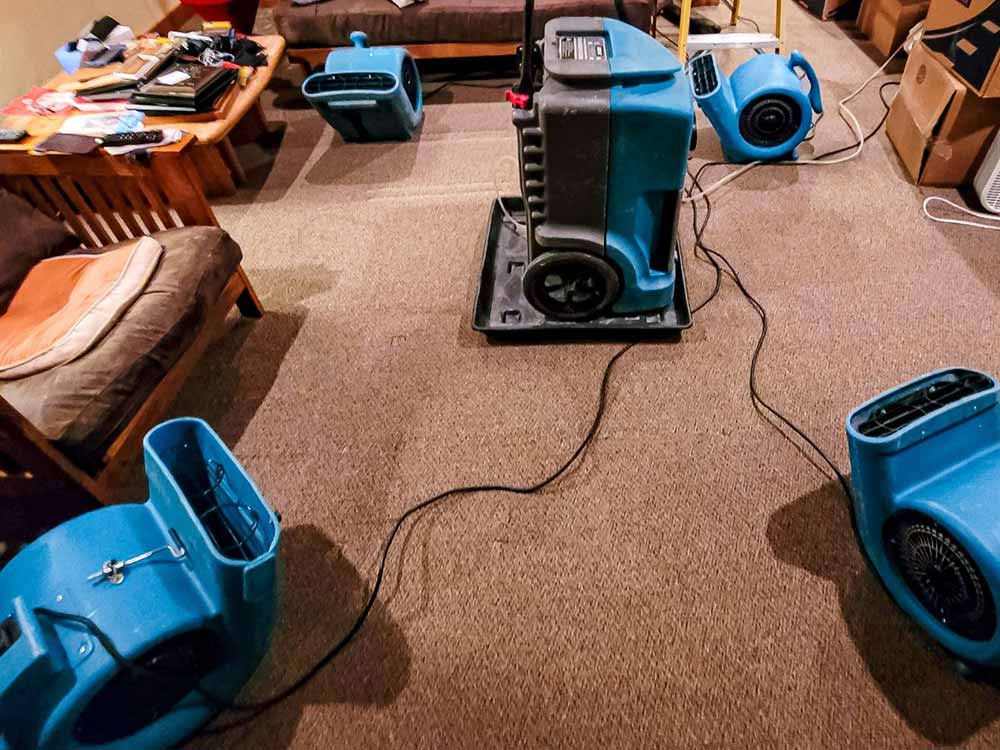
If you encounter any of these situations, it’s time to call professionals like Complete Flood Restoration in San Antonio:
- Persistent leaks with no clear source.
- Extensive mold growth or health concerns.
- Recurrent water stains that keep coming back despite repairs.
- Major structural damage or flooding.
Give us a call, and our IICRC-certified technicians will be on-site within 30 minutes to help you restore your home or business.
Take Back Control of Your Space
Water stains might seem daunting, but with the right knowledge and help, you can tackle them effectively. Remember to fix the root cause, clean up the mess, and take steps to prevent future issues.
If you’re in San Antonio or surrounding areas and need expert assistance, Complete Flood Restoration is just a call away. We’re here to help you restore your home, your business, and your peace of mind. Don’t let water stains overwhelm you—take action today!
FAQs About Water Stains
Can water stains make you sick?
If mold is involved, then yes. Mold exposure can cause respiratory issues, allergic reactions, and even exacerbate asthma or other pre-existing conditions. It’s essential to address water stains quickly to prevent potential health risks.
How do I know if I have a mold problem behind the stain?
Persistent stains with a musty smell or discoloration like black, green, or yellow spots often indicate mold growth. Additionally, peeling paint, bubbling wallpaper, or soft drywall around the area could also signal hidden mold.
Can I use bleach to remove water stains?
Bleach can help remove surface mold, but it won’t treat the root of the problem or penetrate porous materials like drywall. For stubborn stains or recurring mold, professional remediation may be necessary. Always address the moisture source first, or the stain will return.
Why do water stains keep coming back?
Recurrent water stains usually mean the underlying moisture issue hasn’t been resolved. Common causes include plumbing leaks, roof damage, or high indoor humidity. Fixing the source of the water intrusion is the only way to ensure the stains don’t return.
Are water stains always a sign of a leak?
Not always. While leaks are a primary cause, water stains can also result from condensation, poor ventilation, or high humidity. A professional inspection can help determine the exact cause.
How can I prevent water stains from forming?
Regular maintenance is key. Check for plumbing leaks, ensure proper roof drainage, and use a dehumidifier in areas prone to high humidity, such as basements or bathrooms. Sealing vulnerable areas, like around windows and doors, can also help.
Should I repaint over a water stain?
Painting over a water stain without fixing the underlying issue is a temporary solution. Once the moisture problem is resolved, use a stain-blocking primer before applying paint to prevent bleed-through.
When should I call a professional?
If the water stain is extensive, keeps coming back, or is accompanied by a strong musty odor, it’s time to call a professional. They can identify hidden damage, mold, or structural concerns that require expert intervention.
